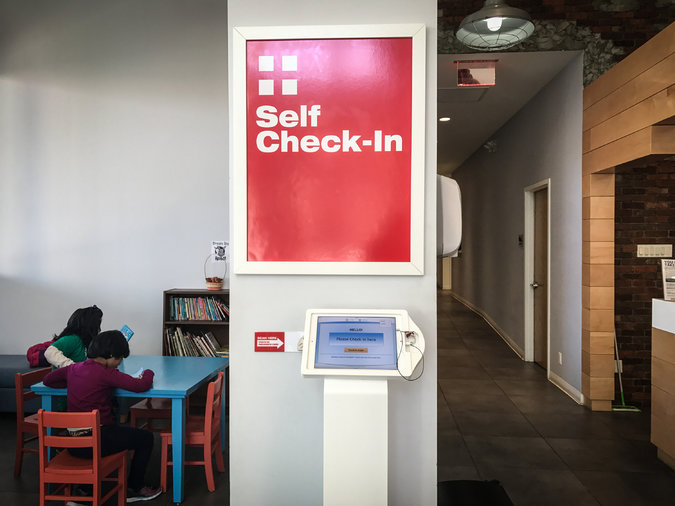Not to be outdone, Lenox Hill Hospital in New York recently hired a veteran of Louis Vuitton and Nordstrom, Joe Leggio, to create an atmosphere that would remind V.I.P. patients of visiting a luxury boutique or hotel, not a hospital. “This is something that patients asked for, and we want to go from three-star service to five-star service,” said Mr. Leggio, the hospital’s director of patient and customer experience.
In its maternity ward, the Park Avenue Suite costs $2,400 per night, twice what a deluxe suite at the Carlyle Hotel down the street commands, but that’s not a problem for well-heeled new parents. Beyoncé and Jay Z welcomed their baby, Blue Ivy, into the world at Lenox Hill, as did Chelsea Clinton and her husband, and Simon Cowell and his girlfriend.
With a separate sitting room for family members, a kitchenette and a full wardrobe closet, the suite overlooking Park Avenue is a world away from the semiprivate experience upstairs at the hospital, where families share an old-fashioned room divided by a curtain. Slightly less exalted but still private rooms in Lenox Hill’s maternity ward range from $630 to $1,700 per night.
As the stream of celebrity couples suggests, there is plenty of demand for these upscale options, crowding out traditional maternity wards. Lenox Hill is replacing some of its shared maternity rooms with private rooms, a far more profitable offering for hospitals since patients pay for them out of pocket, not through insurance plans that can bargain down rates.
Hospital executives argue that giving the well heeled extra attention is a way of keeping the lights on and providing care for ordinary middle- and even upper-middle-class patients, as reimbursements from private insurers and the federal government shrink. “I need to succeed to pay for the children we are bringing in from all over the world and treat for free,” said Dr. Angelo Acquista, a veteran pulmonologist who leads Lenox Hill’s executive health and international outreach programs.
Then there are the red blankets that some big Stanford benefactors receive when they check in as patients. For doctors and nurses, it is a quiet sign of these donors’ special status, which is also noted in their medical records.
“You don’t get better care,” Dr. Jones said. “But maybe the dean comes by, and if it’s done well, it’s done invisibly. It’s an acknowledgment of a contribution to the organization.”
Valuing Relationships
Rex Chiu, an internist with Private Medical in Menlo Park, spent more than a decade as a doctor on Stanford’s faculty. “I loved my time at Stanford, but I was spending less and less time with patients,” he said. “Fifteen or 20 minutes a year with each patient isn’t enough.”
“We all say we should get the same care, but I got sick and tired of waiting for that to happen,” he added. “I decided to go for quality, not quantity.”
Besides more money, the calmer pace of high-end concierge medicine is also a major selling point for physicians — Dr. Matles said he never made it to an event at his children’s school until he joined MD Squared. But for Dr. Sarah Greene, it wasn’t really the money or the lifestyle that led her to Private Medical.
“I really have time to think about my patients when they’re not in front of me,” said Dr. Greene, a pediatrician who joined the company’s Los Angeles practice in October. “I may spend a morning researching and emailing specialists for one patient. Before, I had to see 10 patients in a morning, and could never spend that kind of time on one case.”
Getting in the door as a new hire isn’t easy. When it comes to credentials like college, medical school and residency, Dr. Shlain said, “at least two out of the three need to be Ivy League, or Ivy League-esque.”
In many ways, today’s elite concierge physician provides the same service as the family doctor did a half-century ago for millions of Americans, except that it is reserved for the tiny sliver of the population who can pay tens of thousands of dollars annually for it.
“I didn’t know this level of care was possible,” said Trevor Traina, a serial entrepreneur here who is a patient of Dr. Shlain’s. “I have a better relationship with my veterinarian than the doctors I went to in the past.”
What about everyone else? Mr. Traina doesn’t see much future for the conventional family doctor, except for patients who go the concierge route.
“The traditional model of having a good internist is dying,” said Mr. Traina, a scion of a prominent family here that arrived with the California Gold Rush. “Even the 25-year-olds at my company either have some form of concierge doc, or they’ll just go to an H.M.O. or a walk-in clinic. No one here has a regular doctor anymore.”
Photo

A CityMD walk-in urgent care facility in Queens. Credit Leslie dela Vega/The New York Times
Continue reading the main story






